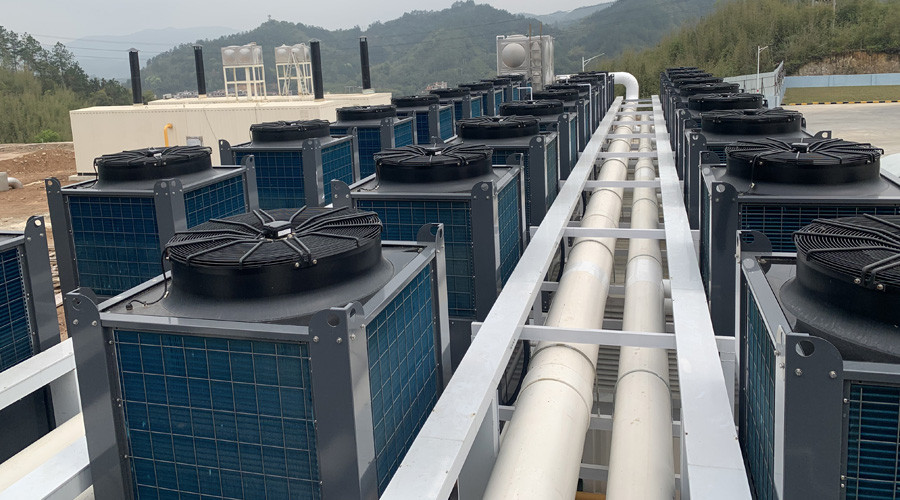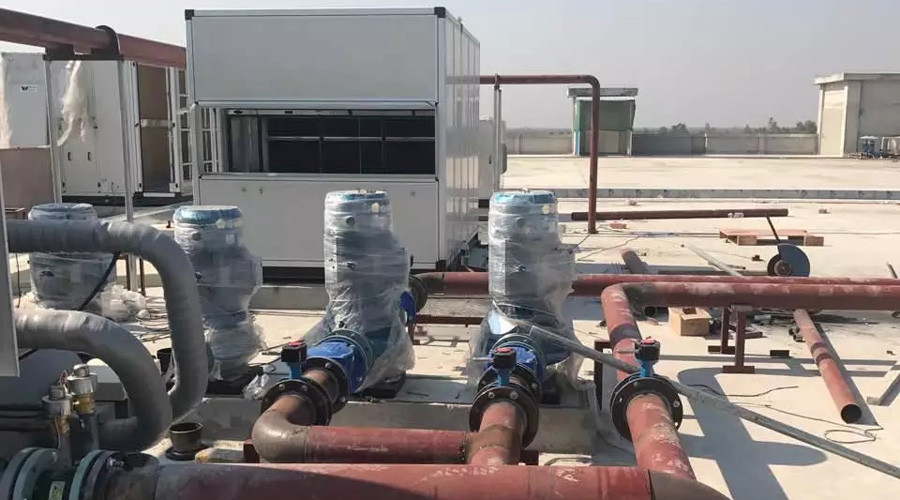Installation Instructions For Refrigeration Units
2021/12/06
Chiller, heat pump, packaged air conditioner, cold room refrigeration condensing units are widely used in different fields, is there any important points needing pay enough attention to before installing them?
Eurostars engineer shares some knowledge of installation instructions as below.
1. Foundation base inspection and acceptance
Jointly inspect the quality of the foundation with civil engineering, supervision and construction divisions, and conduct intermediate transfer after confirming that it is qualified. The inspection content mainly includes external dimensions, levelness of the flat, center line, elevation, depth and spacing of anchor bolt holes, embedded parts, etc.

2. Leveling
According to the construction drawings and the positioning axis of the building, the vertical and horizontal center line of the refrigeration equipment foundation will be worked out, and the refrigeration equipment will be hoisted to the foundation by forklifts and herringbone poles. It should be noted that the direction of the nozzle of the refrigeration condensing unit should meet the design requirements, and the level of the refrigeration equipment should be adjusted to the degree close to the requirements. Use flat shim or inclined shim to perform initial leveling of the condensing unit, and the placement and quantity of shim meets the equipment installation requirements.
(1)After the initial leveling of the refrigeration equipment is qualified, the anchor bolt holes should be grouted twice, and the grade of fine stone concrete or cement mortar used should be 1 to 2 higher than the basic strength grade. Before grouting, the dirt, soil and other debris in the hole should be cleaned up. The grouting of each hole must be completed at one time, layered and tamped, and the bolts are kept in a vertical state. The anchor bolts can be tightened only when the strength reaches 70% or more.
(2)After the chiller is leveled, the pad iron should be spot welded in time. The gap between the chiller and the surface of the foundation should be filled with concrete, and the pad iron should be buried in the concrete. The upper surface of the grouting layer should have a slight slope to prevent oil and water flowing into the base, the plastering mortar should be dense, and the surface should be smooth and beautiful.
(3)Measure on the machining surface of the cylinder, the base or the machining surface of the base plane by using the plumb line method of the level gauge to finely level the refrigeration equipment, so that the allowable deviation of the vertical and horizontal of the fuselage is 1‰, and it should conform to the refrigeration equipment technology document regulations.

3.Auxiliary equipment
(1) Before the auxiliary equipment of the refrigeration system such as condenser, accumulator, oil separator, inter-cooler, oil collector, air separator, evaporator and refrigerant pump is in place, check the direction of the nozzle and the location, the location of the anchor bolt holes and the foundation, and should meet the design requirements.
(2) The installation of auxiliary equipment should meet the following requirements in addition to the design and equipment technical documents.
A. The air tightness test and monomer purge should be carried out for the installation of auxiliary equipment; the air tightness test pressure should meet the requirements of the design and equipment technical documents.
B. The installation level deviation of horizontal equipment and the vertical deviation of vertical equipment should not be greater than 1‰.
C. When installing equipment with an oil collector, one end of the oil collector should be slightly lower.
D. The height of the liquid inlet of the scrubber oil separator should be lower than the height of the liquid outlet of the condenser.
E. When installing low-temperature refrigeration equipment, skids should be added to the equipment's support and contact with other equipment. The skids should be treated with anti-corrosion in advance, and the thickness of the skids should not be less than the thickness of the insulation layer.

No. 6-4, Zi Xiang Road, Ping Shan District, Shenzhen, Guangdong Province, China.


